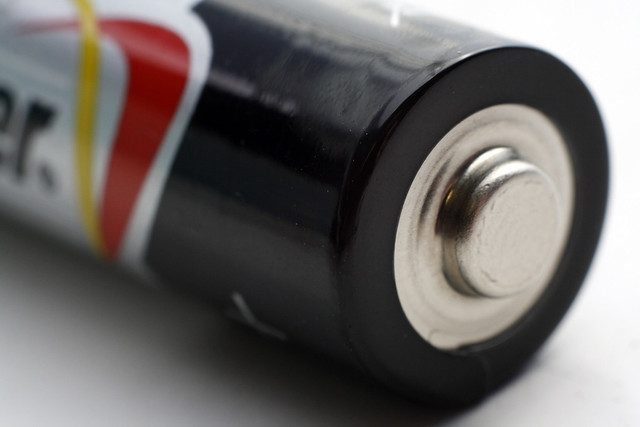Lithium-ion Battery Runtime Calculator
Oct 14, 2019 Pageview:2640
The lithium-ion batteries are famous because of their high-quality performance and durability. These batteries are mostly used in cars, heavy-duty machines and even in the remote as a cell, etc. The lithium-ion battery has many functions and can be used worldwide. This battery is sensitive and requires proper care. Most of the battery manufacturers produce a protection circuit that is helpful to save the battery from external and internal danger. To keep the battery quality high and maintain, the battery charging and discharging time is also calculated so the user can use it according to calculated measurements. Now, there is also a need to calculate the run-time of the battery because all the batteries are not of the same size and capacity. So, you can’t judge the performance of it without calculating it.
The lithium-ion battery is easily available in the market but it's quite expensive than other batteries. These batteries are famous worldwide because of their excellent performance. If you understand its run time then you will be easily managing the battery timing and use it for a long time. For that purpose, the specific calculation is required to complete the task. Let’s have a look at that.
How do you calculate lithium-ion battery run time?
Batteries list their save limit, which depicts the estimated time for which they can keep running without reviving, on the mark or in the client's manual. This worth, in any case, expects explicit conditions, including precisely 25 amperes of current at a voltage of 10.5 volts. On the off chance that your circuit devours pretty much power than this hypothetical circuit and you'll surely experience a shorter or maybe longer battery life. So, to decide to what extent the battery will last, ascertain the battery's all-out limit and gap it by your circuit's capacity.
Explain with an example:
Increase the battery's save limit by 60. With a hold limit, for example, of 120: 120 x 60 = 7,200.
Increase the outcome by 262.5, the battery's evaluated wattage: 7,200 x 262.5 = 1,890,000. The battery contains 1.89 megajoules of vitality.
Partition the outcome by the voltage that comes from the battery produces. On the off chance that it produces and the example, 12 volts: 1,890,000/12 = 157,500.
Gap the outcome by the circuit's current. With a current, for example, of 20 amps: 157,500/20 = 7,875. The circuit can keep running for 7,875 seconds.
Partition the battery life, in a moment or two, by 3,600 to change over it to hours: 7,875/3,600 = 2.19 hours, or roughly 2 hours 10 minutes.
This is the example to understand it well. The runtime calculation is different from it because it has a different formula for calculation. Let’s check out the energy and runtime calculation.
Battery energy and runtime calculator:
Here we are going to elaborate on the battery energy and runtime calculation.
i.Run-time calculator:
Here we are going to elaborate on a single battery and its run-time also tries to calculate it.
The following formula demonstrates the relationship between
i.current flow from the battery
ii.capacity
i.C-rate means charging rate
This relationship can be written in two ways:
No 1,
Ibat=Crate. Cbat
No 2,
Crate= Ibat/Cbat
Justification of the above formula:
Ibat is denoted as the current in amperes that drained from the battery.
Cbat is mentioned here as the rated capacity of the battery that is also shown in amperes per hour.
Crate?is the Current-rate of the battery and that is defined as the discharge current which is divided by the other theoretical current drained at which the battery will deliver its capacity that should be rated in one hour or per hour.
The?run time?is also denoted as (t) and C-rate is inversely relative; it does also can be written in two ways:
No 1
t=1/Crate
No 2,
Crate=1/t
Remember one thing, it’s a theoretical time and it’s affected because of many external factors. If we talk about the real run-time of the lithium-ion battery, it could be 30% less if you are using the exact formula for calculations.
ii.Battery energy Calculation:
Here come the battery energy calculations. It rated energy is mention her in watt per hour that is stored in the battery. The calculation formula of it is as follows:
Ebat=Vbat. Cbat
Let’s open up this formula to explain more:
Ebat is denoted as the rated energy stored in the lithium-ion battery in watt per hour.
Vbat is mentioned here as the rated voltage of the battery and written in volts.
Cbat is the capacity that rated in Ah.
With this formula, you can calculate the run-time and energy calculation of the battery. The calculations may vary in a different place but the estimated calculations might be equal.
How do you use a lithium-ion battery runtime calculator properly?
Here we are going to elaborate on the use of single and double lithium-ion batteries. After the discussion, you will understand easily how to use a lithium-ion battery runtime calculator properly? Let’s get started.
i.Single battery:
The single lithium-ion battery is not easy to calculate because the formula of runtime calculation is theoretical and the real runtime can get after calculated the runtime and then 30% lesser is the accurate battery time. Here is the formula that is used for calculations:
Ibat=Crate. Cbat
It provides the easiest way to calculate the runtime of the lithium-ion batteries. you can use this formula for accurate runtime calculations.
ii.Double batteries:
The double batteries are also calculated in the same manner only the changes came as Cbat will increase. The calculation should be different because the capacity of the battery will be different so, always use the accurate formula to get the accurate results.
Bottom line:
The calculation time of the lithium-ion batteries is different because of their capacity. You can easily calculate the runtime by putting the right amount of capacity of the battery. Two different formulas are used to calculate the energy calculation and run-time. Though these formulas are theoretical the real runtime can be getting if you lesser the calculator rate in 30%.
- Prev Article: Should You Run Down Lithium Battery?
- Next Article: Lipo Battery Puffing Cause
Leave Message
Hottest Categories
-
Hottest Industry News
-
Latest Industry News













